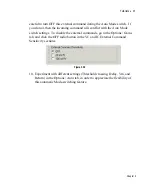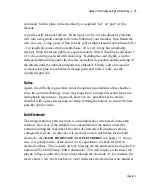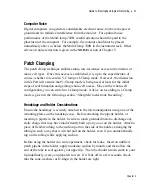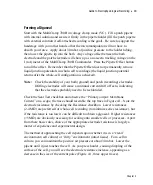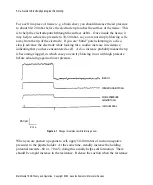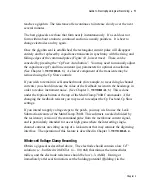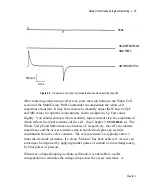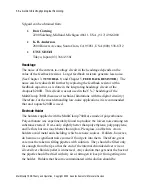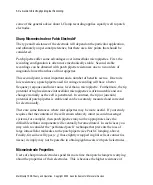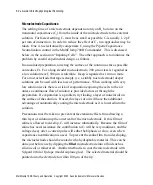
52
•
Guide to Electrophysiological Recording
MultiClamp 700B Commander to the anticipated resting potential of the cell
(typically ~ –60 or –70 mV). Alternatively, the holding potential can be set in
Clampex.
A pulse of strong suction is applied to rupture the cell membrane. This can again
be done by mouth suction or by a syringe. Mouth suction tends to give the best
control. Apply brief (~0.5 s) pulses of suction, starting gently (
e.g.
~80 mbar) and
increasing the suction after every couple of pulses until a large capacitance transient
suddenly appears (Figure 4.2). If you are using a 10 cc syringe, draw back on the
plunger until the capacitance transient appears, but be prepared to quickly release
the suction as soon as this occurs so the cell is not sucked up into the electrode.
The MultiClamp 700B contains a Zap circuit to aid in breaking into the cell. This
circuit delivers a pulse of 1 V DC to the patch for variable durations ranging from
0.1 to 10 ms. Start with the Zap duration at 1 ms then depress the Zap button in the
MultiClamp 700B Commander. A successful break-in will again look like that in
Figure 4.2. If the patch is not disrupted, the Zap duration can be increased and the
Zap applied a second time, and so on. Some investigators have found that the
application of moderate suction while the Zap pulse is given results in a higher
incidence of successful patch disruption. The reappearance of the original
rectangular pulse either means that you have lost the seal or that the cell does not
have a large input resistance. It is not unusual for small cells to have an input
resistance of several gigohms but with active conductances it might be as low as a
few tens of megohms.
MultiClamp 700B Theory and Operation, Copyright 2005 Axon Instruments / Molecular Devices




